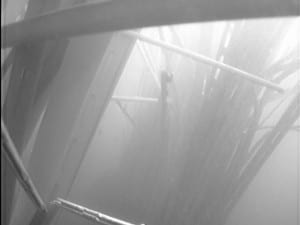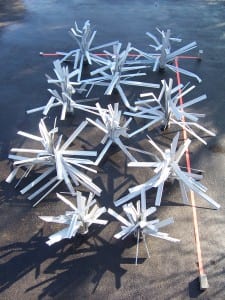by Kim Knowles
For nearly ten years, Prairie Rivers network has been working on
strengthening our state’s antidegradation law. This law was designed to prevent degradation of clean waters through the promotion of new and innovative water pollution reduction technologies. Prairie Rivers network was involved in the passing of the law in 2002, and since that time has been helping Illinois communities develop creative solutions to keep pollution out of their waterways.
One form of assistance we offer is education. Prairie Rivers network has developed several tools for the lay person and the professional. Our guide books are accessible to all, with illustrations, examples, and simple explanations of technologies for reducing pollution from sewage treatment plants and polluted runoff from cities. For professionals, we developed a technical document that provides vital information on state-of-the-art sewage treatment methods. you can visit prairierivers.org/resources/downloads to view these documents.
Prairie Rivers network is also working hand-in-hand with communities
that are building new or redesigned pollution treatment plants to achieve a variety of advances in clean water.
For instance, we worked closely with the villages of Chatham and new berlin on the site plans for a new drinking water treatment plant in the sangamon River Valley. because the sangamon River is already polluted by too much sediment carried to the river by stormwater and erosion, we developed a plan to keep sediment on the site by using landscape features that allow stormwater to soak into the ground. The plan includes use of
porous pavement, bioswales, a bioretention area, native plantings and nomow areas, as recommended in our stormwater management guidebook.
A riot of crocuses appeared in my back yard not long ago, stimulated, no doubt, by some roto-tilling as part of a landscaping project last year. by the time you read this, they will have faded, replaced by tulips and bluebells; the magnolias will be in flower, and everywhere, our native redbuds will be starting their spring display. The transformation of our landscape, of drab patches of earth and muddy riverbanks feels to me like a miracle every year. And the transformation of our daily lives can feel miraculous too, as we unfurl and un-layer our protections against the cold, and like the flowers, stretch out a bit in the sun and embrace the warm breeze.
With Spring finally here, I hope you are able to find joy and optimism in your life, despite natural disasters and political upheaval in so many places.in this spring edition of Prairie River Notes, you will find many reasons for optimism in our shared effort to improve the health of illinois rivers for ourselves and for future generations. stacy James writes about our efforts to improve the laws and institutions that regulate factory farm pollution that leads to fish kills and contaminated drinking water.
Kim Knowles writes about victories we have achieved by working with industrial polluters and sewage treatment plants, helping them adopt innovative ways to reduce pollution from their facilities.
Brian Perbix tells us about his work with people living near polluting coal mines and coal ash disposal sites, and how we are helping them have more of a say in the decisions that are af- strives to protect the rivers and…streams of Illinois and to promote the lasting health and beauty of watershed communities.By providing information, sound science, and hands-on assistance, Prairie Rivers network helps individuals and community groups become effective river conservation leaders.
And finally, Traci Barkley tells us about the newly-formed Heartland Coalfield Alliance, a regional coalition supporting a transition away from polluting coal-based energy – the Alliance will provide a counter balance to the extremely well-funded and influential coal industry lobby (p 4). you will also see, in our 2010 Annual Report, cause for optimism in Prairie Rivers network – a strong organization, in good financial shape, with a strong base of loyal supporters, a great track record and plans for even better things in the future.Thanks to all of you — your support makes what we do possible.with best wishes,Glynnis Collins,executive Director


 04.20.2011 — Entries close on April 30, 2011
04.20.2011 — Entries close on April 30, 2011